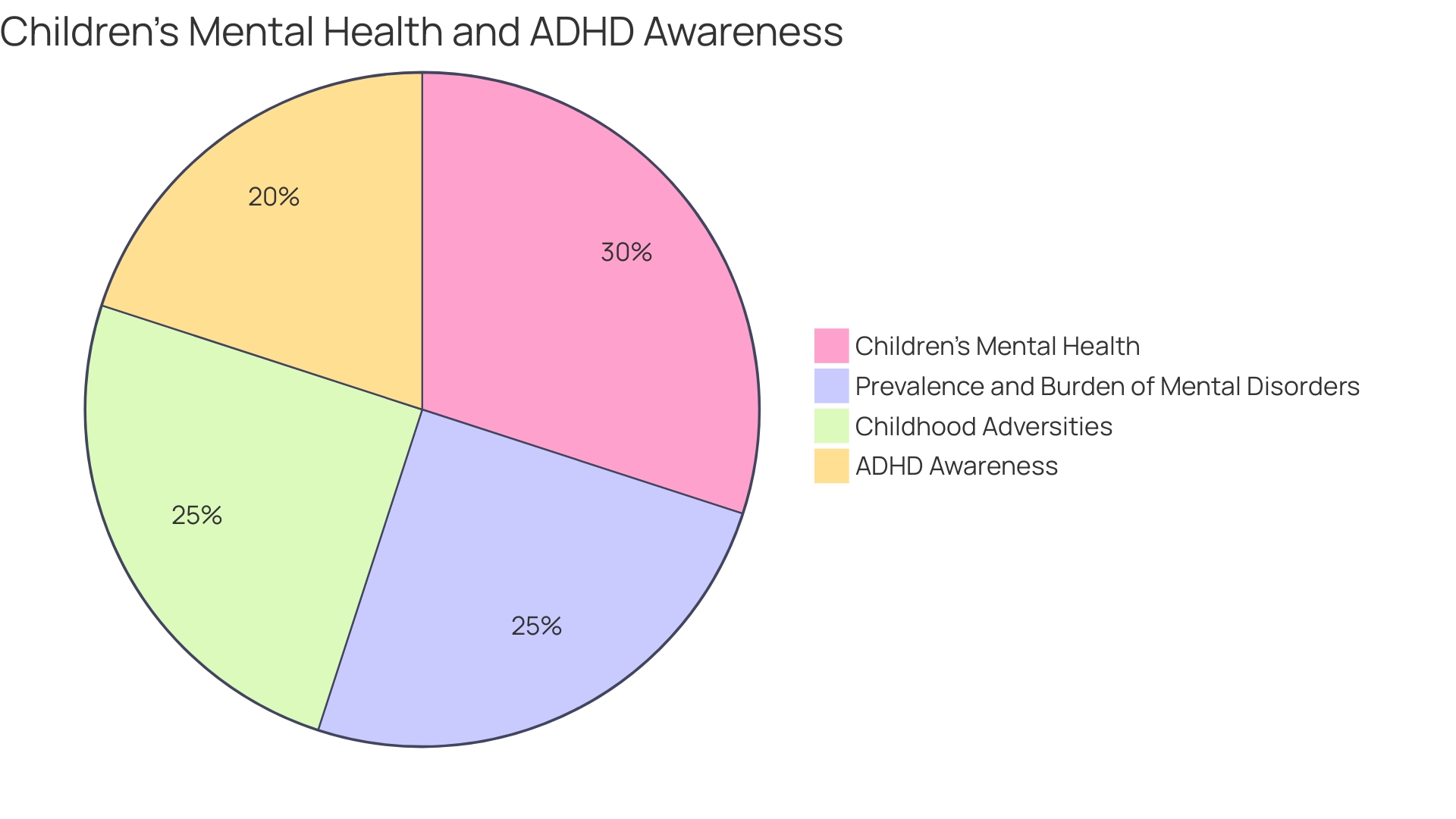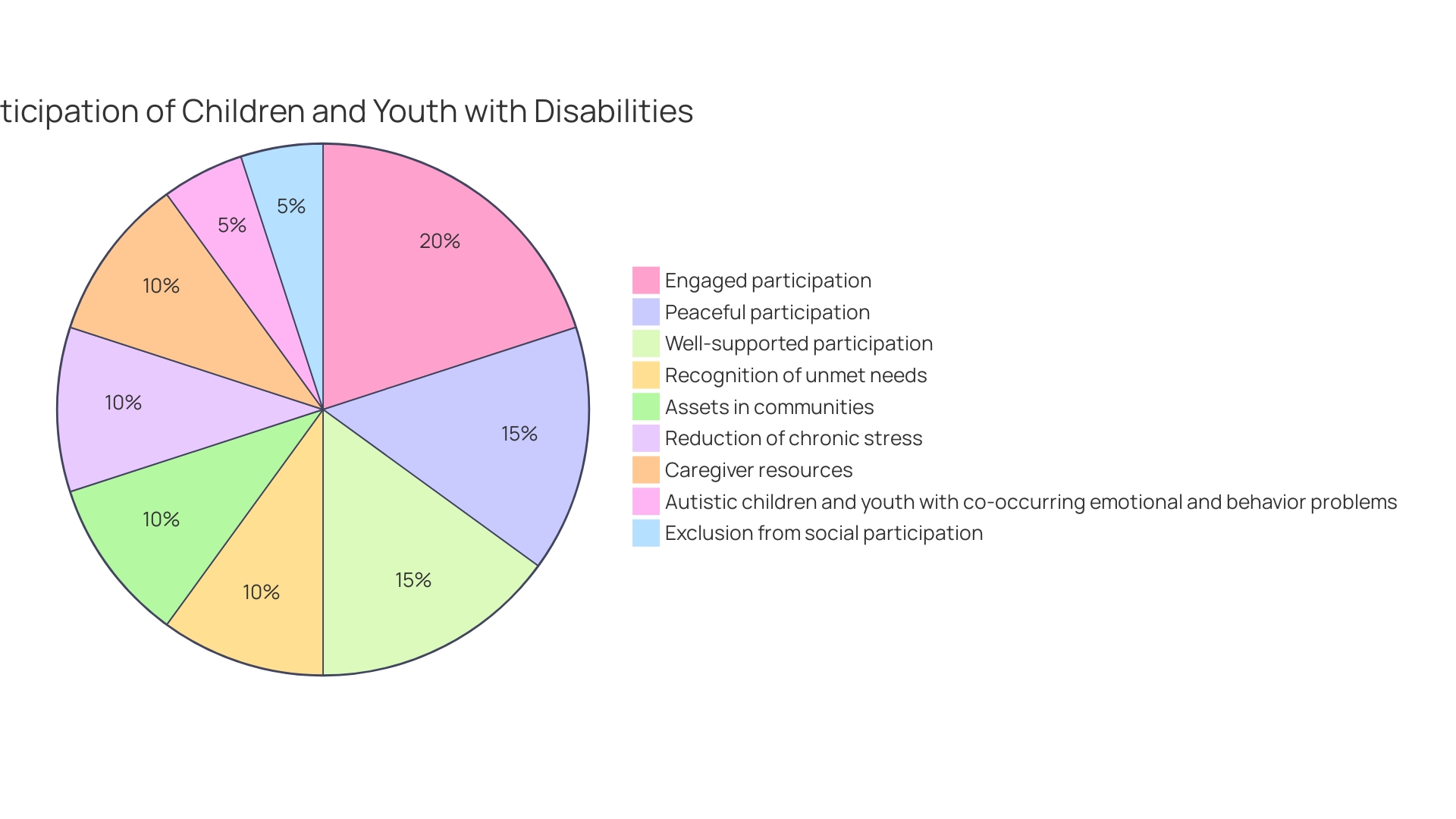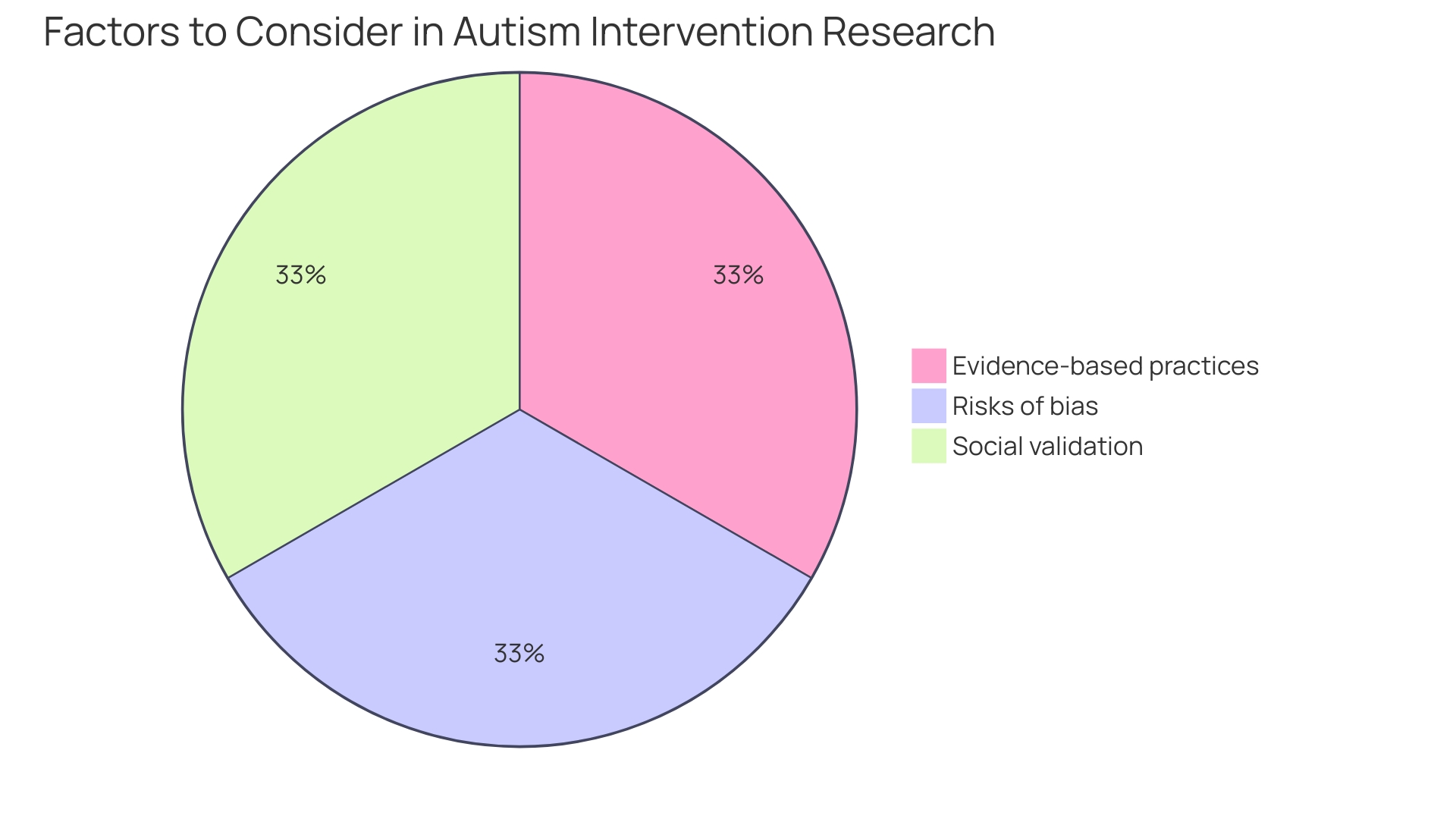Introduction
Applied Behavior Analysis (ABA) therapy is a powerful tool in supporting individuals with autism to develop positive behaviors and overcome challenges. Rooted in scientific principles, ABA empowers individuals with autism to unlock their full potential and cultivate vital life skills. With the prevalence of autism now estimated at 1 in 36, the range of abilities and challenges among those affected is vast, requiring tailored interventions.
The recent release of updated ABA Practice Guidelines highlights the importance of high-quality implementation, ensuring equitable opportunities for children with disabilities to thrive. ABA therapy begins with a thorough assessment by a Board Certified Behavior Analyst, leading to personalized goals and continuous monitoring. By embracing evidence-based techniques and involving families, ABA therapy sets individuals on a path towards a well-supported life where they can contribute to their communities and lead fulfilling lives.
Understanding Applied Behavior Analysis (ABA)
Applied Behavior Analysis (ABA) operates on a simple yet profound premise: to understand behavior and enhance quality of life through systematic interventions. Based on scientific principles, ABA has gained recognition as an effective method for supporting individuals with autism spectrum disorder to cultivate positive behaviors and mitigate challenging ones. At its core, ABA therapy is about utilizing evidence-based techniques to empower individuals with developmental differences, enabling them to refine crucial life skills and reach their utmost potential.
Dr. Jan Blacher, a distinguished research professor, highlights a notable rise in diagnoses related to a certain developmental condition, underscoring the necessity for versatile interventions catered to various requirements. With the current estimated prevalence of 1 in 36, the range of abilities and challenges among those affected is vast. 'ABA treatment adjusts to this diversity, guaranteeing that each individual's distinct profile informs their treatment plan.'.
The recent launch of the updated ABA Practice Guidelines by the Council of Autism Service Providers marks a new era in autism care, emphasizing high-quality implementation of ABA treatment. This advancement supports a vision shared by luminaries like Dr. David Offord, who advocated for equitable opportunities for children with disabilities to thrive in society. These guidelines strive to 'make the race fair,' fostering environments where all children can engage meaningfully in their communities.
ABA therapy begins with a thorough assessment by a Board Certified Behavior Analyst (BCBA), leading to tailored, measurable goals for each child. Continuous monitoring allows for the dynamic adjustment of strategies, ensuring sustained progress. Recognizing the family's role, ABA services offer flexibility to align with different needs and schedules. This approach embodies a commitment to whole-person health, as evidenced by initiatives like the partnership between Aetna Better Health of Kentucky and MapHabit, which aims to coordinate care for people with unique needs.
Through consistent, high-quality ABA interventions, we are creating a world where individuals with neurodevelopmental challenges are not only understood but also fully supported in reaching their full potential, contributing to their communities, and leading fulfilling lives.
Importance of Early Intervention in ABA Therapy
The importance of early intervention in ABA therapy for children with the developmental disorder cannot be overstated. According to recent guidelines from the Council of Autism Service Providers, Applied Behavior Analysis (ABA) is an effective treatment that must be implemented with the highest quality to be beneficial. Emphasizing the importance of early intervention, these guidelines align with the principle that providing support during pivotal stages of development can greatly influence a child's ability to learn essential skills and improve communication and social interactions. As Dr. Jan Blacher, a research professor at UC Riverside, points out, the comprehension of a developmental disorder is evolving, and with it, the recognition that early, customized interventions can have a profound impact on children's lives. The occurrence of this developmental disorder has significantly risen from 1 in 2,500 individuals to 1 in 36, and as a result, the requirement for suitable intervention approaches has become more urgent. Acknowledging the distinct obstacles and abilities of every child, early ABA intervention focuses on particular behaviors and promotes children's involvement in everyday social participation, which Dr. David (Dan) R. Offord emphasized as vital to mental health and equity. The recent shift from quasi-experimental studies to more rigorous randomized controlled trials in research on individuals with developmental disorders underscores the commitment to identifying effective early interventions. This methodological improvement is pivotal as it ensures that the interventions are assessed for their true efficacy, providing caregivers with the evidence-based practices they need to support their children's development. Statistically, challenges in reporting and selective positive outcome representation have been noted in studies, highlighting the necessity for transparency and rigor in research. With this in mind, early ABA intervention, when implemented correctly, stands as a cornerstone for setting children on a path towards a well-supported life.

Key Areas Targeted by ABA Therapy
Applied Behavior Analysis (ABA) is intended to improve the quality of life for individuals by emphasizing important abilities like communication, social interaction, daily living, and behavior management. ABA treatment is not a one-size-fits-all method; it's a customized process, involving families in creating personalized treatment plans that cater to the specific needs of the person with autism. The main objective of the treatment is to promote self-reliance and enhance the overall standard of living, encouraging favorable behavioral modifications and proficiency enhancement.
Embracing the social model of disability, ABA therapy recognizes that disability is not just a medical issue but a complex interplay of social, cultural, and political factors. This perspective shifts the focus from 'fixing' the person to adapting the environment and societal attitudes to support individuals with autism spectrum disorder. For instance, rather than solely teaching an autistic person to conform to traditional job interview practices, there's a growing recognition of the need to modify the interview process itself to better assess their abilities.
Statistics indicate that intervention research in a specific developmental disorder, including ABA, has often been conducted with design flaws. It's essential to thoroughly assess such research to guarantee that interventions are effective, evade potential harm, and respect the autonomy and identity of individuals with autism spectrum disorder. The increasing prevalence of autism diagnoses, now 1 in 36 according to Dr. Jan Blacher, calls for a refined understanding of the spectrum and an adaptable approach to treatment.
Recent updates to the ABA Practice Guidelines by the Council of Autism Service Providers emphasize the continuous development of best practices in ABA, ensuring that the highest quality of care is delivered. These guidelines serve as a beacon for insurers, practitioners, and stakeholders, outlining the necessity of quality implementation of ABA treatment.
In summary, ABA intervention, rooted in the social model of disability, is a collective endeavor to empower individuals with developmental challenges. It aims to create a more inclusive society by acknowledging the need for systemic change and advocating for the rights and respect of the community with autism.

Effective ABA Strategies and Techniques
ABA therapy, a well-researched intervention for autism, employs strategies that foster positive behavioral changes. Customized to specific requirements, it incorporates methods like positive reinforcement--rewarding desired behaviors to promote their repetition--and task analysis, which breaks down intricate skills into smaller, attainable stages. The process also incorporates prompting and fading to support skill acquisition, gradually reducing assistance until independence is reached. Another crucial part is functional communication training, which equips people with alternative ways to express their needs constructively.
These approaches have been crucial in dealing with different cases, ranging from individuals with intellectual disabilities to people with high IQs and communicative skills. As Dr. Jan Blacher emphasizes, the broad range of autism spectrum disorder necessitates adaptable interventions. The recent update in ABA guidelines by the Council of Autism Service Providers emphasizes quality implementation for maximum effectiveness, resonating with Dr. Blacher's observations.
In practice, a Board Certified Behavior Analyst (BCBA) begins with a comprehensive assessment to establish measurable goals, ensuring the child's progress is consistently monitored and strategies are adapted for sustained benefit. This flexible approach not only supports the child but also the family, recognizing the unique dynamics and schedules of each household.
As the frequency of this developmental disorder rises, so does the comprehension of its complexities. A French study in 2008 showcased the intricacies of targeting behaviors, such as head-banging, which may appear unconventional but serve as coping mechanisms for certain people. This underscores the importance of ABA's adaptability and the ethical considerations in striving for neurotypical appearances versus genuine well-being.
Dr. Mary Barbera emphasizes ABA's diverse influence, promoting its contribution in enhancing lives and reducing stress for all participants, while also tackling financial and political dimensions of the condition. These perspectives are reflected in the comprehensive approach of ABA, which is continually informed by the evolving landscape of understanding autism, as evidenced by the changing diagnostic criteria and the diverse experiences shared by individuals on the spectrum.

Implementing ABA Therapy in Different Settings
Applied Behavior Analysis (ABA) therapy is recognized for its adaptability, allowing it to be effectively implemented in diverse environments such as homes, schools, and community settings. This adaptability is crucial because it offers individuals with autism spectrum disorder the opportunity to practice and master skills in the settings where they naturally occur. Collaborative efforts among ABA therapists, parents, educators, and other professionals are essential in maintaining a unified approach to interventions, no matter the setting.
With a surge in autism diagnoses, now estimated at 1 in 36 individuals according to Dr. Jan Blacher, it becomes even more imperative to tailor ABA strategies to each person's unique capabilities and challenges. The recent revision of the ABA Practice Guidelines by the Council of Autism Service Providers emphasizes the necessity for high-quality, correctly implemented ABA treatment to ensure its effectiveness. A Board Certified Behavior Analyst (BCBA) begins the treatment with a thorough evaluation, followed by establishing specific, measurable objectives, with continuous monitoring and the ability to modify approaches as necessary.
These individualized tactics are not just for the child; they envelop the entire family unit, recognizing the diverse needs and schedules that each family presents. By introducing flexible models of work, such as hybrid approaches, professionals like BCBAs can offer the necessary support while accommodating their life needs, thereby attracting better talent and enhancing the quality of care. As understanding of the condition evolves, so too must the practices within ABA, ensuring they reflect the social model of disability and recognize autism as a minority identity shaped by social context.
The integration of these approaches facilitates the seamless transfer and application of learned skills to real-world situations, fostering meaningful and lasting behavior change. Such a comprehensive, open, and flexible method of ABA therapy offers the potential for individuals with autism to thrive across all areas of life.
Conclusion
In conclusion, ABA therapy is a powerful tool that empowers individuals with autism to develop positive behaviors and overcome challenges. With the prevalence of autism now estimated at 1 in 36, tailored interventions are crucial to address the diverse range of abilities and challenges among those affected.
The recent release of updated ABA Practice Guidelines highlights the importance of high-quality implementation, ensuring equitable opportunities for children with disabilities to thrive. ABA therapy begins with a thorough assessment by a Board Certified Behavior Analyst, leading to personalized goals and continuous monitoring. By embracing evidence-based techniques and involving families, ABA therapy sets individuals on a path towards a well-supported life where they can contribute to their communities.
Early intervention in ABA therapy is essential. It greatly influences a child's ability to learn essential skills and improve communication and social interactions. ABA therapy targets key areas such as communication, social interaction, daily living, and behavior management.
By recognizing that disability is a complex interplay of social, cultural, and political factors, ABA therapy adapts the environment and societal attitudes to support individuals with autism.
Effective strategies and techniques, such as positive reinforcement, task analysis, prompting and fading, and functional communication training, are employed in ABA therapy. A comprehensive assessment by a Board Certified Behavior Analyst establishes measurable goals and ensures consistent progress monitoring. ABA therapy can be effectively implemented in diverse settings, promoting collaboration among ABA therapists, parents, educators, and other professionals.
In conclusion, ABA therapy empowers individuals with autism to unlock their full potential and cultivate vital life skills. By embracing evidence-based techniques, involving families, and promoting high-quality implementation, ABA therapy supports individuals with autism in reaching their full potential and leading fulfilling lives across all areas.




